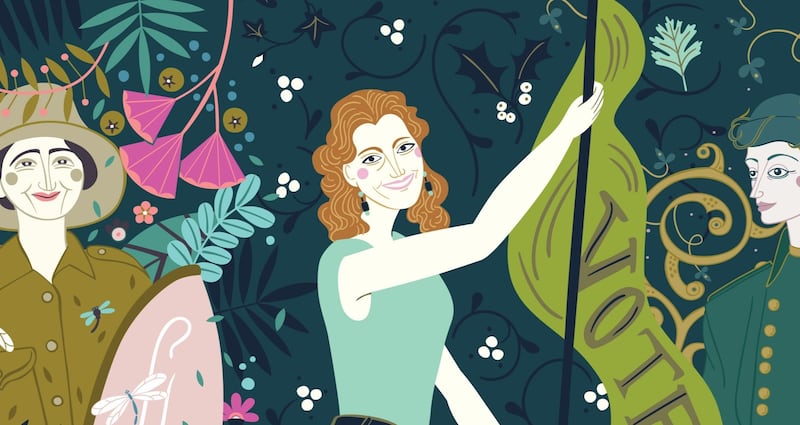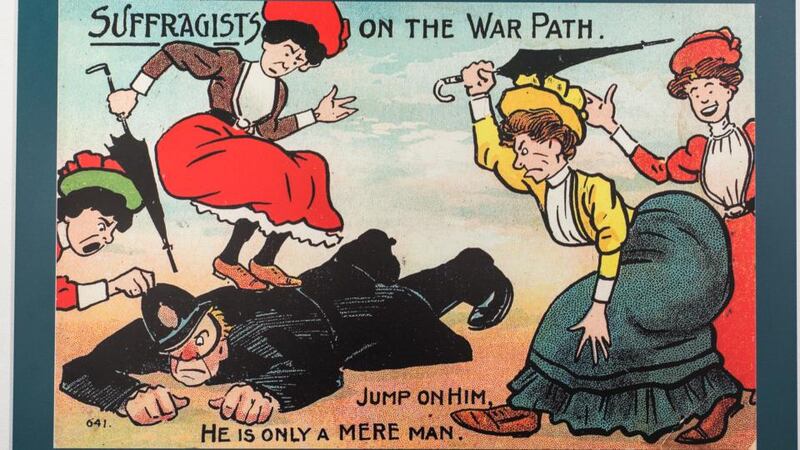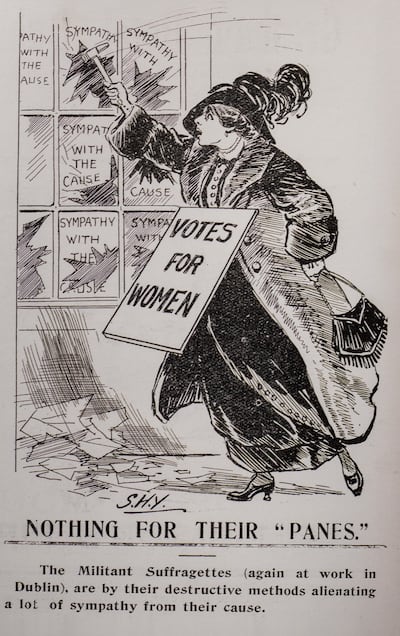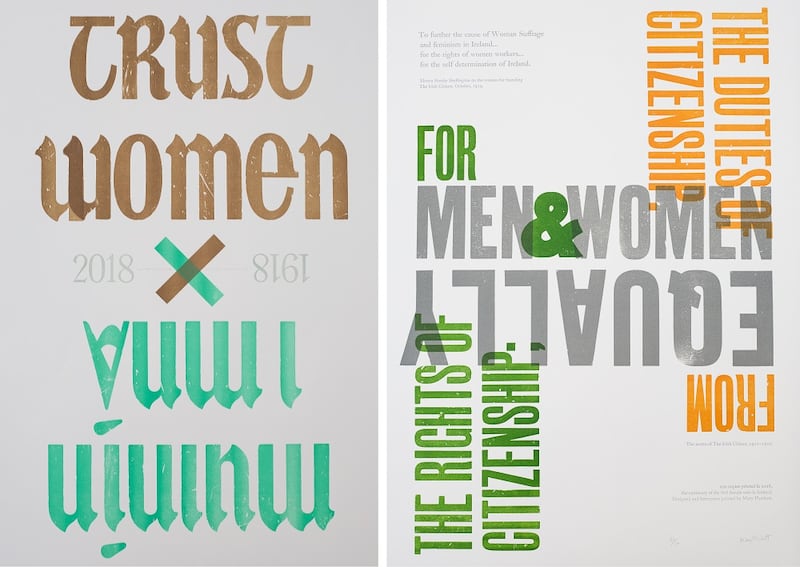Irish women have often suffered from limited historical representation in the material and visual records displayed in our museums.
As a museum collections specialist, it struck me three years ago that I had never encountered objects related to Irish women’s suffrage in permanent museum exhibitions or collections. With the centenary of Irish women’s suffrage approaching, I wondered how museums in 2018 would choose to commemorate this event, if material and visual records from this time were limited? So I set out to trace and catalogue the surviving objects and images from the Irish suffrage campaign.
Only a tiny portion of the promotional and organisational material which would have been produced, used, and circulated during this period of the Irish suffrage campaign still survived a century later. I found a small number of promotional objects and ephemera used by Irish suffrage organisations, including suffrage badges, banners, and flags, suffragette prison medals, and a number of portable wooden speaking platforms used by suffragettes to deliver speeches outdoors in public spaces.



Print, in many forms, was used as a channel to spread the message and opinions of the campaign, as well as a tool by suffrage opponents to criticise and mock the movement. Surviving print ephemera, photographs, and newspaper publications illustrate the influence and effect of protest through print in this period of early mass media. They demonstrate the huge public opposition and negativity towards granting the vote to women, as seen in many of the surviving anti-suffrage cartoons and postcards from the time.


Negative publicity
They also show the concerted efforts by the women in the suffrage campaign to confront and challenge the tide of negative publicity and propaganda levelled against them by the popular press. The archive of The Irish Citizen suffrage newspaper, as well as suffrage art and press photography, survive as records showing us the organisation, intelligence, and positive representation of the women associated with the fight for suffrage.
Considering the substantial scale and participation of the Irish suffrage campaign, very few pieces survive, which do not give a true indication of the spread and significance of the movement. This is partly due to the temporary nature of what was produced – posters, banners, pamphlets, and newspapers do not stand up well to the test of time – but also due to the former lack of collection of objects from this time by museums and libraries.
Despite the fact that the Irish movement was considered proportionally equal in size to that of its British equivalent, it has suffered from neglect by historians and institutions over time. In this centenary year of 2018, we have the opportunity to reassess this important period of female political reform, and to recognise its deserved place within Irish history.

Donna Gilligan is an Irish museum archaeologist and material culture historian. She curated Print, Protest and the Polls: The Irish women's suffrage campaign and the power of print media, exhibited at the National Print Museum of Ireland from May to November this year









